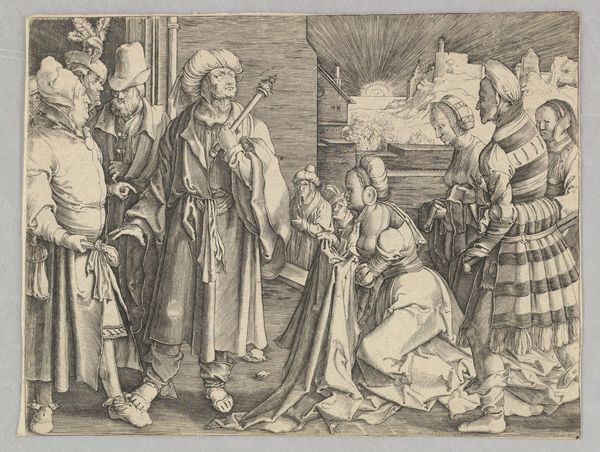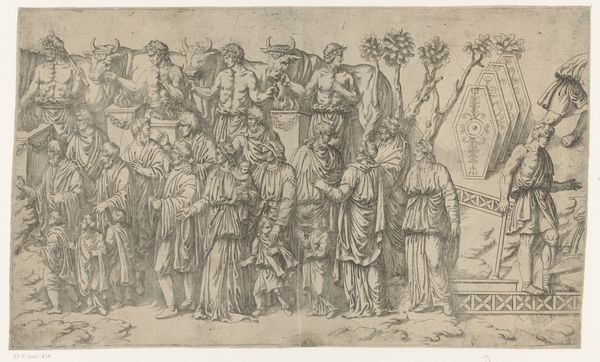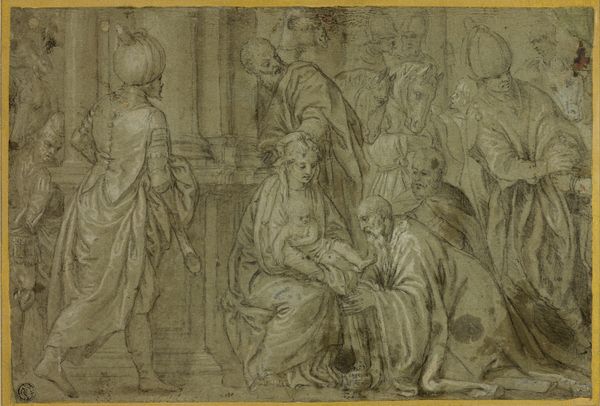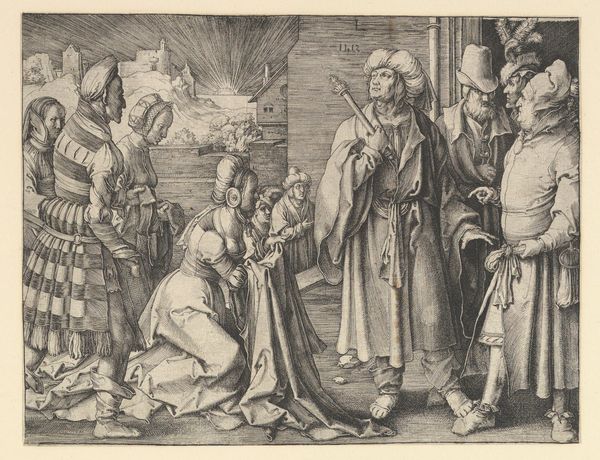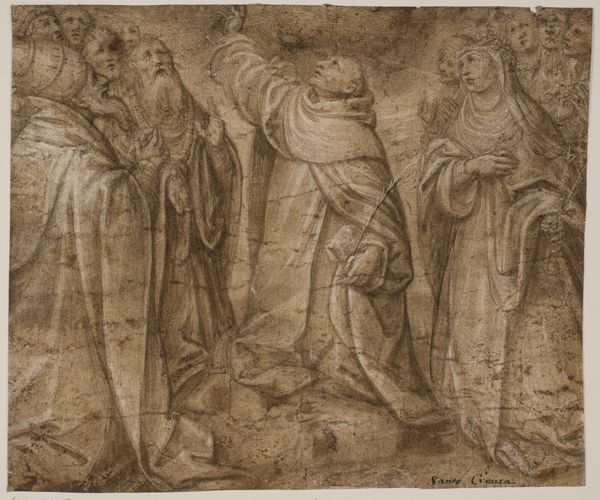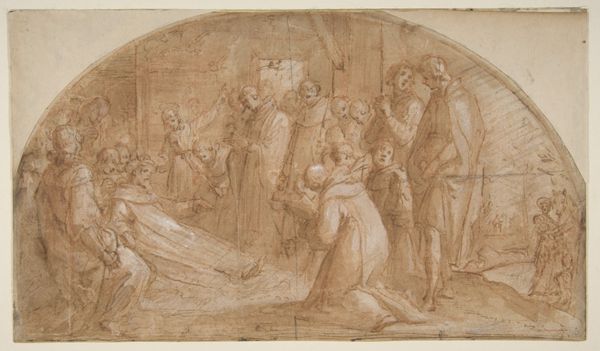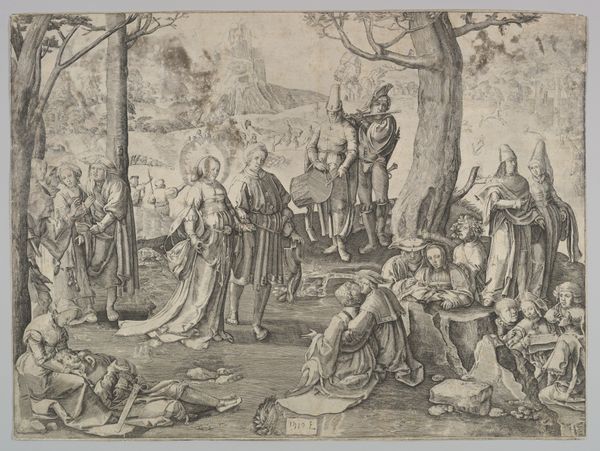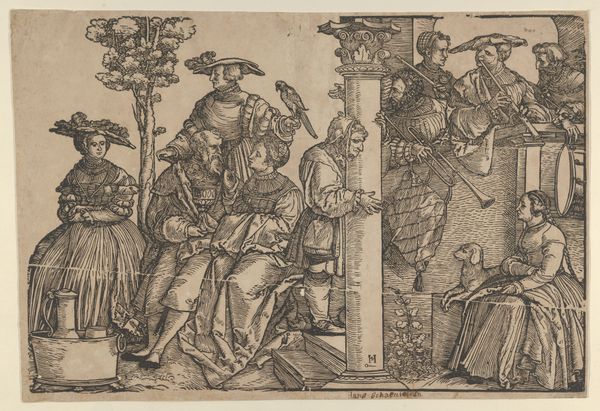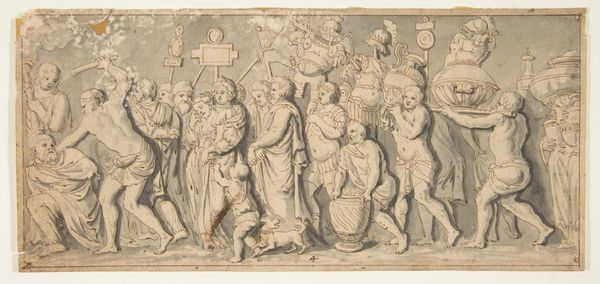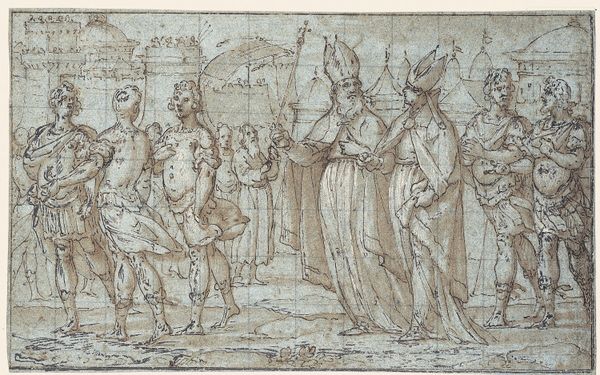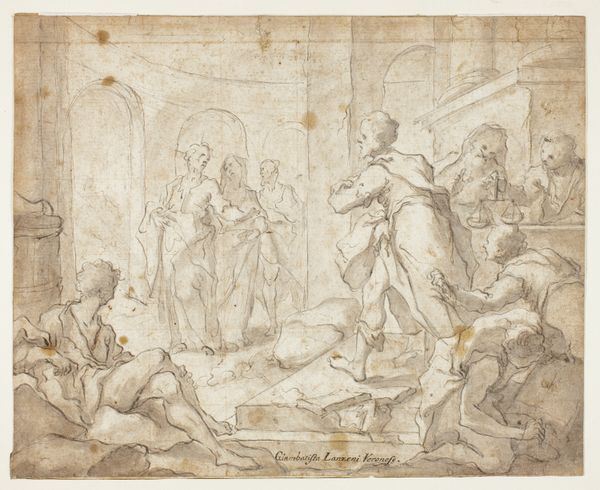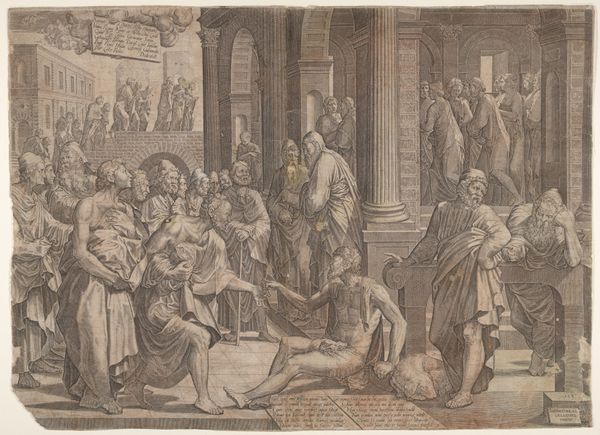
drawing, print, engraving
#
drawing
#
narrative-art
# print
#
figuration
#
history-painting
#
northern-renaissance
#
engraving
Copyright: Public Domain
Curator: Look at the line work here, in Lucas van Leyden's "Potiphar's Wife Accuses Joseph," created around 1512. It is a stunning print. Editor: Indeed. My immediate impression is the density and complexity. The formal arrangements of the figures feel deliberate, almost stage-like. Curator: Precisely! The material reality of this piece is in the labor-intensive process of engraving. Consider how many impressions would have been made and consumed across Europe. Editor: Tell me more about the process and Northern Renaissance aesthetics evident in van Leyden’s compositions? Curator: The engraving process allowed van Leyden to disseminate visual narratives, connecting them to wider social and religious structures of his time. The story itself would have served as an morality tale regarding lust and slander. Editor: From a compositional perspective, notice how Potiphar stands centrally, visually mediating the space between the kneeling wife and his group of advisors. This division reinforces his power. What about his robe, could the fabric serve as any insight? Curator: The robe emphasizes class and status and draws a distinction between Potiphar and the kneeling wife on one side. Meanwhile Joseph remains unseen to suggest themes of deception, or, perhaps, the illusionary nature of appearances versus realities. Editor: An intriguing contrast, no doubt. But look closely again. Does this interplay ultimately reinforce the rigid social order and the vulnerability of women? Curator: Yes, in this interpretation, there appears to be an underlining message or the artwork being to reaffirm social hierarchies regarding men and women. Potiphar has complete dominion over his home and it's up to his judgement to settle this misunderstanding of his Joseph being falsely accused of acting upon his master's wife. Editor: Ultimately, viewing this van Leyden artwork has made me further examine my perspectives of gender and representation and consider if the themes presented in Potiphar ring through society's structure today. Curator: And for me, considering the means of production expands how I can consider how access affects power in the period this print was made.
Comments
No comments
Be the first to comment and join the conversation on the ultimate creative platform.
